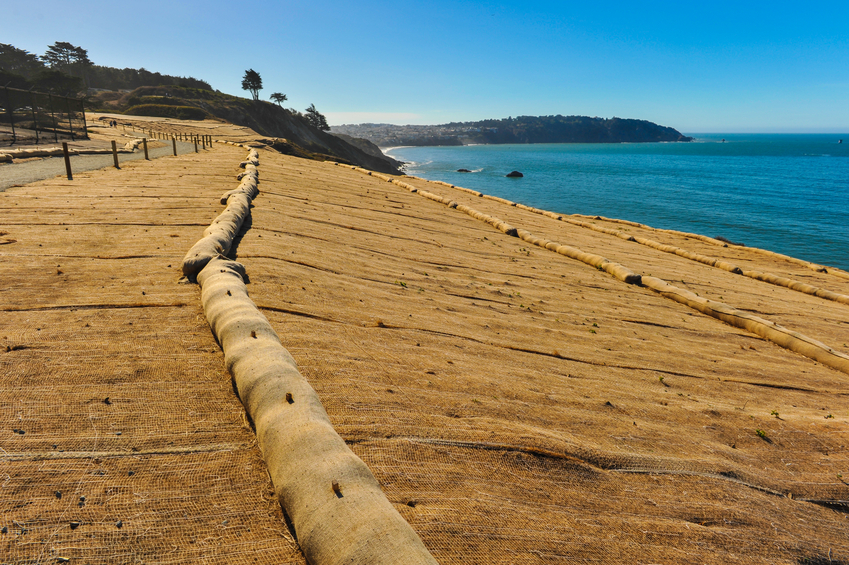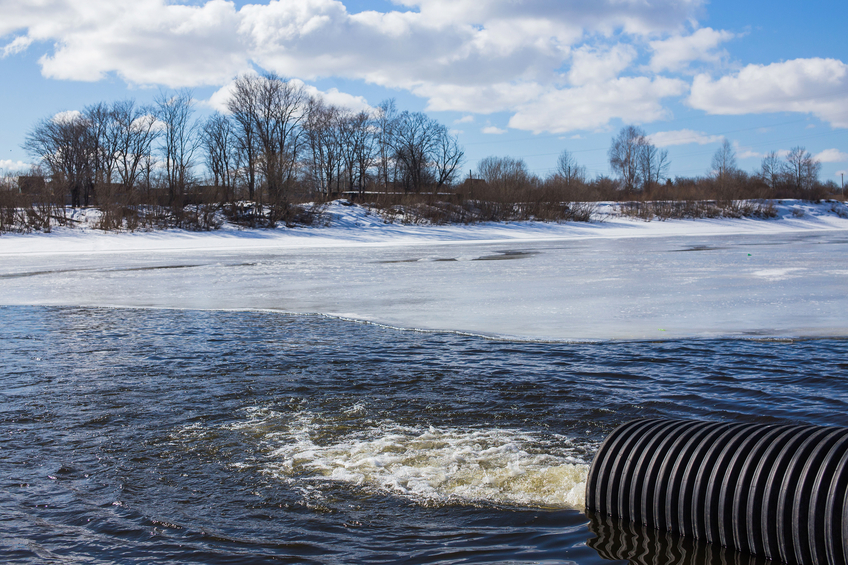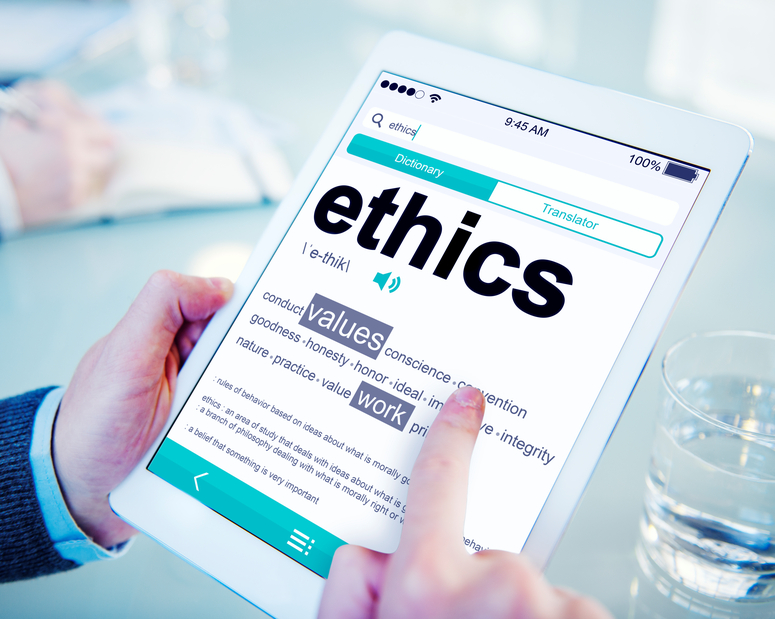Illinois Stormwater and Laws/Rules/Ethics/Sexual Harassment 30 PDH Discount Package 3
Courses in this Package
Construction Site Storm Water - Erosion Control (C03-001)
Pond Planning, Design and Construction (C05-014)
Sewer Sediment and Control (C04-009)
Storm Water Pollution Prevention Plans for NPDES Construction Sites (C05-009)
Stormwater Best Management Practice Design: Vegetative Biofilters (C10-003)
Sexual Harassment Prevention for Illinois Professionals (IL1-001)
Engineering Laws, Rules, and Ethics for Illinois Professional Engineers (IL2-001)

This online engineering PDH course presents EPA's control measures to minimize erosion at construction sites due to higher peak flow rates, increased flooding, etc.
Erosion and sedimentation related to construction site storm water runoff can significantly affect the aquatic population and hydraulic characteristics of the receiving waters. Alterations in hydraulic characteristics of streams receiving runoff include higher peak flow rates, increased frequency and duration of bankfull and subbankfull flows, increased occurrences of downstream flooding, and reduced baseflow levels.
EPA recognizes that such alterations can be prevented by implementing an effective storm water management program. Therefore the EPA published the Storm Water Phase II Rule on
This 3 PDH online course is applicable to municipality owners and/or operators, construction contractors/workers, site developers, engineers, managers, and all other personnel involved in the implementation of erosion controls for storm water runoff from construction sites.
This PE continuing education course is intended to provide you with the following specific knowledge and skills:
- Types and methods of erosion control systems
- Applicability
- Siting and design criteria
- Maintenance and cost considerations
- Effectiveness and limitations
In this professional engineering CEU course, you need to review EPA’s Best Management Practice relating to the “Erosion Control” section of the “Construction Site Storm Water Runoff Control”. This section of the BMP addresses the following erosion control methods:
- Chemical Stabilization
- Mulching
- Permanent Seeding
- Sodding
- Soil Roughening
- Geotextiles
- Gradient Terraces
- Soil Retention
- Temporary Slope Drain
- Temporary Stream Crossings
- Vegetated Buffer
- Construction Sequencing
- Dust Control
Once you complete your course review, you need to take a multiple-choice quiz consisting of twenty (20) questions to earn 3 PDH credits. The quiz will be based on the “Erosion Control” section of this EPA publication.
Upon successful completion of the quiz, print your Certificate of Completion instantly. (Note: if you are paying by check or money order, you will be able to print it after we receive your payment.) For your convenience, we will also email it to you. Please note that you can log in to your account at any time to access and print your Certificate of Completion.

This online engineering PDH course describes basic design principles of embankment and excavation ponds as well as construction requirements. Other topics include: water needs, preliminary soil investigations, watershed & stormwater runoff estimation, basin sealing, spillways and inlets, and operation & maintenance.
This 5 PDH online course is intended for hydrologists, civil engineers, agricultural engineers, construction engineers, municipal engineers, geotechnical engineers and environmental engineers. An attendee of this course will gain knowledge about planning, design, and construction of embankment and excavated ponds.
This PE continuing education course is intended to provide you with the following specific knowledge and skills:
- Be familiar with the general features of embankment and excavated ponds and the differences between them
- Be familiar with the items to be covered in a preliminary investigation
- Be able estimate storm water runoff quantity and rate using the runoff curve number method
- Be able to estimate the time of concentration for a watershed for a given flow length, average watershed slope, and runoff curve number
- Be familiar with the general features of a hooded or canopy inlet spillway and a drop inlet spillway, as well as the advantages and disadvantages of each
- Be able to make spillway design calculations using tables and figures given in the course file
- Be able to estimate embankment end area for known embankment height, side slopes, and top width
- Be able to estimate earthfill requirements for an embankment for known end areas and embankment length
- Be familiar with alternative pond sealing methods and comparisons among them
Upon successful completion of the quiz, print your Certificate of Completion instantly. (Note: if you are paying by check or money order, you will be able to print it after we receive your payment.) For your convenience, we will also email it to you. Please note that you can log in to your account at any time to access and print your Certificate of Completion.

This online engineering PDH course describes sources of sewer sediment and the impact of those sediments, methodology for quantifying sediment-solids in sewer systems and sediment control methods. This course provides an integrated approach to manage the solids generated in urban wet weather flows, both on the land surface and in drainage sewer systems.
Threats to the quality of receiving waters by discharges from urban-storm-generated WWF, including combined sewer overflow and polluted runoff from urban streets, are well known. During many storm events, large volumes of stormwater are drained via street inlets into the urban sewer system. The storm runoff washes off street dust-and-dirt and pollutants from catchment surfaces into the sewer system.
This 4 PDH online course is applicable to mechanical/plumbing engineers, civil engineers and other professionals who are involved in sewer design and maintenance.
This PE continuing education course is intended to provide you with the following specific knowledge and skills:
- Sources of sewer sediment and impacts
- Estimation of urban watershed solids loading
- Methodology for quantifying sediment-solids in sewer system
- Methods for field sampling and monitoring of hydrogen sulfide in sewer
- Sewer sediment control: sewer flushing
- A case study of sewer flushing system design and operation
In this professional engineering CEU course, you need to review the material contained in the Sewer Sediment and Control, A Management Practices Reference Guide, EPA/600/R-04/059, January 2004.
Upon successful completion of the quiz, print your Certificate of Completion instantly. (Note: if you are paying by check or money order, you will be able to print it after we receive your payment.) For your convenience, we will also email it to you. Please note that you can log in to your account at any time to access and print your Certificate of Completion.

This online engineering PDH course introduces the reader to the development of construction site Stormwater Pollution Prevention Plans (SWPPP). A SWPPP is required for coverage under the National Pollutant Discharge Elimination System (NPDES) Construction Site General Permit.
Development inevitably causes some degree of disturbance and compaction of the soil, the loss of vegetation density, impacts to natural habitats and the creation of impervious surfaces. All too often ordinances requirements result in a site layout that does not take into consideration the most valuable aspects of a site. Water quality, habitat, and critical ecological features can be lost if sites are fit to a development, rather than fitting a development to a site.
The most critical requirement of the NPDES permit is the preparation and implementation of a SWPPP. The NPDES program has specific requirements for items that must be addressed in a SWPPP. Understanding the requirements for the creation and implementation of a SWPPP is essential to staying in compliance with the law. The SWPPP serves many functions: NPDES permit conditions require it, it provides documentation of compliance, and ultimately if properly designed and implemented it provides the direction to reduce water quality impacts.
This 5 PDH online course is applicable to practicing engineers, contractors, developers, regulators, and all other personnel involved with construction sites.
This PE continuing education course is intended to provide you with the following specific knowledge and skills:
- When and why you need a SWPPP
- What elements are required in a SWPPP
- Fundamentals of the erosion process
- Developing a SWPPP using site analysis and planning
- Proper selection of Best Management Practices
- Certification and Notification requirements
- SWPPP Implementation
In this professional engineering CEU course, you need to review the EPA publication "Developing Your Stromwater Pollution Prevention Plan" (833-R-060-04).
Upon successful completion of the quiz, print your Certificate of Completion instantly. (Note: if you are paying by check or money order, you will be able to print it after we receive your payment.) For your convenience, we will also email it to you. Please note that you can log in to your account at any time to access and print your Certificate of Completion.

This online engineering PDH course provides design guidance for BMPs referred to as vegetative biofilters. Three different types of these on-site BMPs are described in this course and include grass swales, vegetated filter strips and bioretention cells.
The goals and objectives of best management practice (BMP) for stormwater management are as diverse as the situations to which they are applied.
This 10 PDH online course is applicable to civil and geotechnical engineers, site developers, and contractors as well as design and construction personnel involved with the planning and design of stormwater systems.
This PE continuing education course is intended to provide you with the following specific knowledge and skills:
- Overview of grass swales, vegetated filter strips and bioretention cells
- Review general design considerations associated with vegetative biofilters
- Analytical procedures for runoff volumes and rates, and sediment and nutrient loading (runoff and loading calculation examples included)
- Factors affecting vegetative filter strips
- Design guidance and procedures for vegetative filter strips
- Grass swale design guidance and considerations
- Guidance on bioretention cells
In this professional engineering CEU course, you need to review Sections 1 through 7 of the US Environmental Protection Agency (EPA) Publication EPA/600/R-04/121A, "Stormwater Best Management Practice Design Guide: Volume 2 Vegetative Biofilters".
Upon successful completion of the quiz, print your Certificate of Completion instantly. (Note: if you are paying by check or money order, you will be able to print it after we receive your payment.) For your convenience, we will also email it to you. Please note that you can log in to your account at any time to access and print your Certificate of Completion.

This online PDH course presents a training on sexual harassment prevention in order to adopt and actively implement policies that ensure that workplaces are safe for employees to report and express their concerns about sexual harassment.
The Illinois Human Rights Act makes it a civil rights violation “[f]or any employer, employee, agent of any employer, employment agency or labor organization to engage in sexual harassment.” 775 ILCS 5/2-102(D).
The Illinois General Assembly finds that tolerance of sexual harassment has a detrimental influence in workplaces by creating a hostile environment for employees, reducing productivity, and increasing legal liability. Therefore, every employer in the State of Illinois is required to provide employees with sexual harassment prevention training that complies with section 2-109 of the Illinois Human Rights Act (“IHRA”).
This 1 PDH online course is applicable to professionals licensed in the State of Illinois and who are required to demonstrate continuing professional competency in sexual harassment prevention training as a condition of their license renewal.
This PE continuing education course is intended to provide you with the following specific knowledge and skills:
- Gaining an overview of sexual harassment prevention consistent with the Illinois Human Rights Act
- Familiarizing with types of unlawful sexual harassment, unwelcome behavior and working environment
- Learning about examples of conduct that may constitute unlawful sexual harassment
- Understanding sexual harassment in online environments
- Understanding employer responsibilities in the prevention, investigation, and corrective measures on sexual harassment
- Familiarizing with the Federal and State statutory laws concerning sexual harassment including remedies available to victims
Upon successful completion of the quiz, print your Certificate of Completion instantly. (Note: if you are paying by check or money order, you will be able to print it after we receive your payment.) For your convenience, we will also email it to you. Please note that you can log in to your account at any time to access and print your Certificate of Completion.

This online engineering PDH course presents the laws and rules of ethics and professional responsibility governing the practice of engineering in the State of Illinois.
Engineering ethics is (1) the study of moral issues and decisions confronting individuals and organizations involved in engineering and (2) the study of related questions about moral conduct, character, ideals and relationships of peoples and organizations involved in technological development (Martin and Schinzinger, Ethics in Engineering).
Excerpts from the Professional Engineering Practice Act of 1989, 225 ILCS 325 and the Illinois Administrative Code, Part 1380, which relate to the rules of profession conduct, continuing education requirements, proper use of seal and other pertinent regulatory provisions are presented in this course.
This 2 PDH online course is applicable to Professional Engineers licensed in the State of Illinois who are required to demonstrate continuing professional competency in the Illinois Laws, Rules and Ethics as a condition of license renewal. For each renewal period, every licensee must complete thirty (30) professional development hours, at least one (1) of the 30 hours must be in professional ethics and one (1) of the 30 hours must be in the laws and rules regulating the practice of engineering in the State of Illinois.
This PE continuing education course is intended to provide you with the following specific knowledge and skills:
- Familiarizing with the laws and rules regulating the practice of engineering in the State of Illinois
- Learning about engineering ethics, the rules of professional conduct and responsibility
- Understanding the role of the Illinois Board and its disciplinary authority
- Understanding the continuing education requirements in the State of Illinois
- Gaining an overview of disciplinary cases, violations and their corresponding penalties imposed by the Illinois Board
Upon successful completion of the quiz, print your Certificate of Completion instantly. (Note: if you are paying by check or money order, you will be able to print it after we receive your payment.) For your convenience, we will also email it to you. Please note that you can log in to your account at any time to access and print your Certificate of Completion.